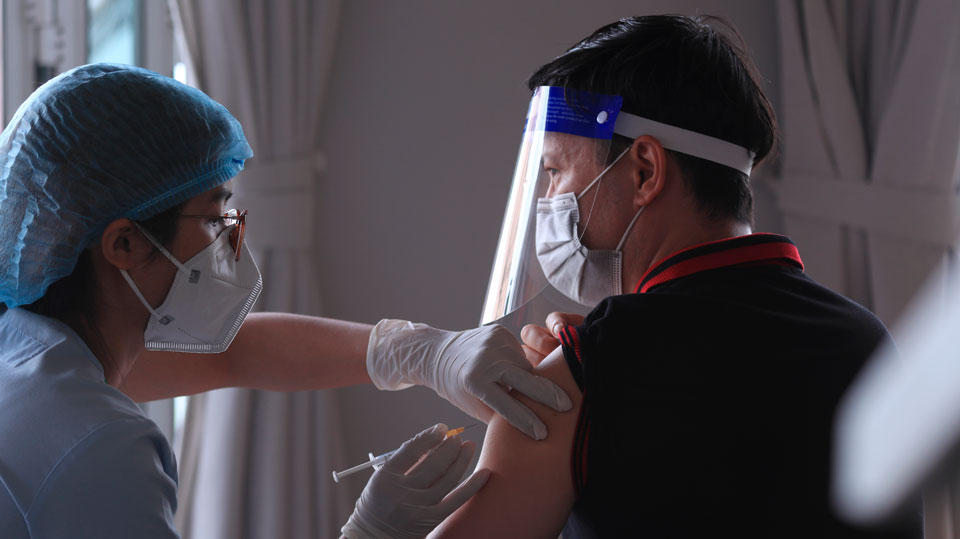
HANOI—For much of the last year and a half, Vietnam has stood out among the countries of the world because of its highly effective strategy of containing the COVID-19 pandemic. Much of the success can be attributed to the socialist, communal approach to fighting the virus. However, when the delta variant arrived in Vietnam, it proved much harder to contain. Now the Vietnamese government and Vietnamese people are taking the same socialist and communal approach to the vaccination campaign, and it’s proving highly successful.
The most difficult part of the vaccination campaign has been procuring enough doses for the country of nearly 100 million people. While the government and the Communist Party of Vietnam source vaccine doses through diplomatic ties, the people have mobilized as well. Back in June, the government set up a public fund to pay for more vaccines that people can donate to via text message or online bank transfers. The fund has collected hundreds of millions of dollars from individuals and companies across the country.

The Ministry of Health has so far approved seven different COVID-19 vaccines to be used in the country, with the Cuban-made Abdala vaccine the latest to join the list. It received approval just last week. As the vaccines arrive in the country, they are distributed among 19,000 different “vaccination points” across the country, which then organizes inoculation in their jurisdictions.
One of the main methods for distribution is through the neighborhood and ward governments across the country. These local bodies know the needs and logistics of their communities and can distribute the vaccines in an organized and effective manner. In the past two weeks, the neighborhood in which this writer lives started its vaccination program and did so in an organized and impressive manner.
On Sept. 9, residents were informed via text message, phone call, and announcements over loudspeakers that the following day everyone should come to the community house for pre-vaccination COVID-19 screenings. (Every neighborhood in Hanoi has at least one house for community use and organizing.) The testing center was organized by local government officials, community volunteers, and medical professionals. The whole process, from the time of arrival at the back of the line to the completion of the test, took about five minutes.
Two days later, pre-vaccination medical forms were distributed to everyone in the neighborhood and then collected by the local government. Two days after that, all residents were given a time to show up at the vaccination center in the ward government building.

Arriving at the vaccination center, everyone was once again greeted by local government workers and volunteers from the community and the Ho Chi Minh Youth Union who helped with the paperwork. There were even volunteers translating for anyone that didn’t speak or read Vietnamese. From the time I got in line to the moment I was given the Sinopharm vaccine, less than an hour had passed. By the end of the day, everyone in the neighborhood had been vaccinated. One could not help but be impressed at the efficiency of the community working together.
While some vaccination centers did experience more difficulties and longer lines, the campaign has run smoothly overall. The Hanoi city government set the goal of having all adults in the city of nine million receiving at least their first dose of the vaccine by the middle of the month. On Sept. 13 alone, over a million residents received their first jab. By Sept. 15, over 90% of the capital’s adult population had received at least one dose.
At the start of the national vaccination campaign back in June, only around two million people had received their first dose. Four months later, that number is now over 26 million, with nearly six million being fully vaccinated. As the country receives more doses of the vaccines, the rollout will continue.
The last few months of the fourth wave have been difficult for everyone across Vietnam. Over 700,000 people have been infected by the virus, with 17,746 people dying from the illness. Most of the country has been under strict lockdown for weeks, and in some places like Ho Chi Minh City, the epicenter of the current outbreak, for over two months. However, one cannot help but be encouraged, watching the entire country mobilize all its resources and work together to get through this difficult time.












Comments